Abarth 500 595 695 vs Hyundai Tucson – Differences & prices compared
Two cars, one duel: Abarth 500 595 695 meets Hyundai Tucson.
Which one wins in performance, efficiency and value for money? Find out now!
Costs and Efficiency:
When it comes to price and running costs, the biggest differences usually appear. This is often where you see which car fits your budget better in the long run.
Hyundai Tucson has a barely noticeable advantage in terms of price – it starts at 30600 £, while the Abarth 500 595 695 costs 32600 £. That’s a price difference of around 1928 £.
As for range, the Abarth 500 595 695 performs significantly better – achieving up to 265 km, about 195 km more than the Hyundai Tucson.
Engine and Performance:
Power, torque and acceleration are the classic benchmarks for car enthusiasts – and here, some clear differences start to show.
When it comes to engine power, the Hyundai Tucson has a clearly perceptible edge – offering 252 HP compared to 155 HP. That’s roughly 97 HP more horsepower.
In acceleration from 0 to 100 km/h, the Abarth 500 595 695 is to a small extent quicker – completing the sprint in 7 s, while the Hyundai Tucson takes 7.90 s. That’s about 0.90 s faster.
In terms of top speed, the Hyundai Tucson performs distinct better – reaching 194 km/h, while the Abarth 500 595 695 tops out at 155 km/h. The difference is around 39 km/h.
There’s also a difference in torque: Hyundai Tucson pulls evident stronger with 367 Nm compared to 235 Nm. That’s about 132 Nm difference.
Space and Everyday Use:
Whether family car or daily driver – which one offers more room, flexibility and comfort?
Seats: Hyundai Tucson offers a bit more seating capacity – 5 vs 4.
In curb weight, Abarth 500 595 695 is minimal lighter – 1410 kg compared to 1520 kg. The difference is around 110 kg.
In terms of boot space, the Hyundai Tucson offers significantly more room – 620 L compared to 185 L. That’s a difference of about 435 L.
In maximum load capacity, the Hyundai Tucson performs decisively better – up to 1799 L, which is about 1249 L more than the Abarth 500 595 695.
When it comes to payload, Hyundai Tucson clearly perceptible takes the win – 545 kg compared to 385 kg. That’s a difference of about 160 kg.
Who wins the race?
The Hyundai Tucson proves to be wins the duel decisively and therefore becomes our DriveDuel Champion!
Hyundai Tucson is the better all-rounder in this comparison.
 @ Hyundai Motor Company
@ Hyundai Motor Company
Hyundai Tucson
Abarth 500 595 695
The Abarth 500, particularly in its 595 and 695 renditions, captures the spirit of Italian motoring with its compact yet aggressive design. Known for its lively performance and distinctive styling, this little powerhouse is a joy to drive, offering an engaging experience that appeals to enthusiasts. With its rich motorsport heritage, the Abarth 500 embodies the essence of fun and excitement on both the streets and the race track.
details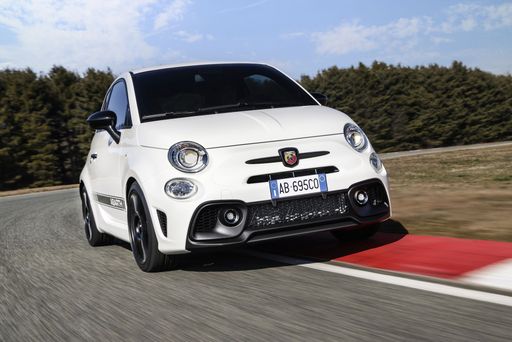 @ Abarth / Stellantis Media
@ Abarth / Stellantis Media
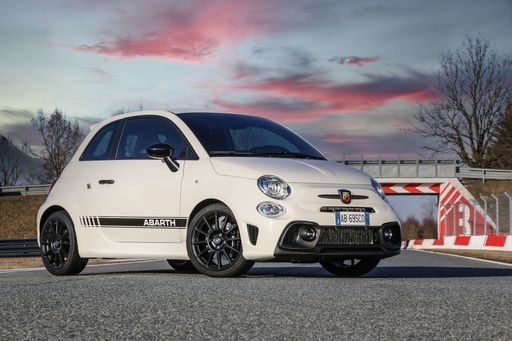 @ Abarth / Stellantis Media
@ Abarth / Stellantis Media
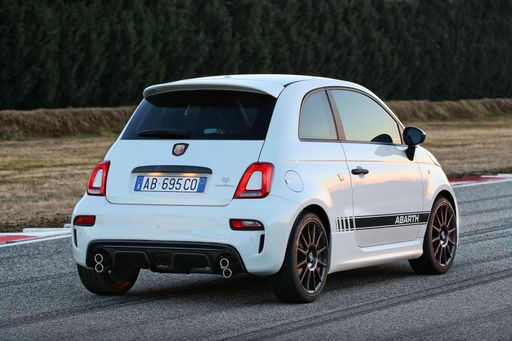 @ Abarth / Stellantis Media
@ Abarth / Stellantis Media
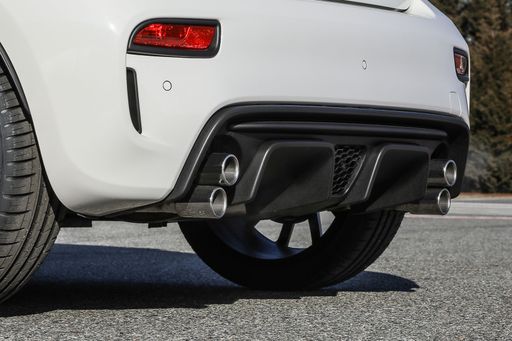 @ Abarth / Stellantis Media
@ Abarth / Stellantis Media
 @ Abarth / Stellantis Media
@ Abarth / Stellantis Media
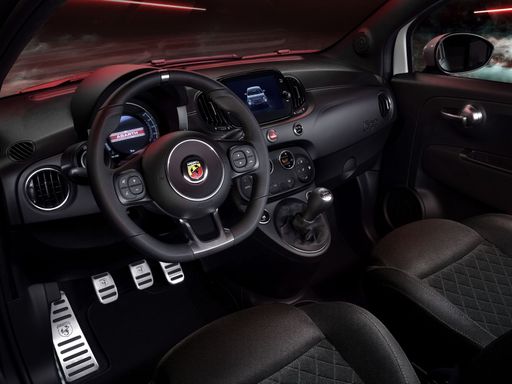 @ Abarth / Stellantis Media
@ Abarth / Stellantis Media
Hyundai Tucson
Hyundai Tucson marries bold, sculpted looks with a clever, roomy cabin that feels smarter than its price tag suggests. It's composed on the road, easy to live with day-to-day, and a sensible choice for buyers who want SUV style without the showroom theatrics.
details @ Hyundai Motor Company
@ Hyundai Motor Company
 @ Hyundai Motor Company
@ Hyundai Motor Company
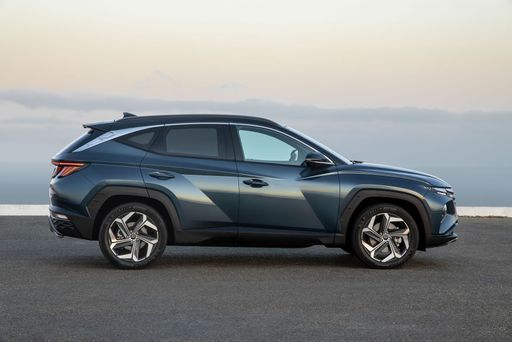 @ Hyundai Motor Company
@ Hyundai Motor Company
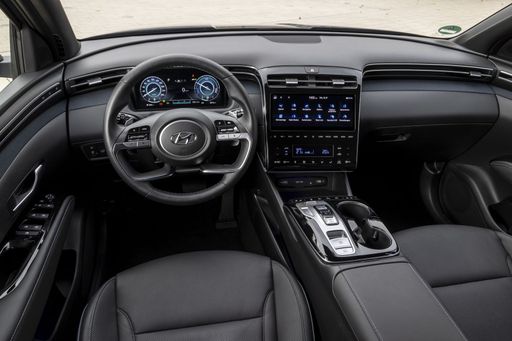 @ Hyundai Motor Company
@ Hyundai Motor Company
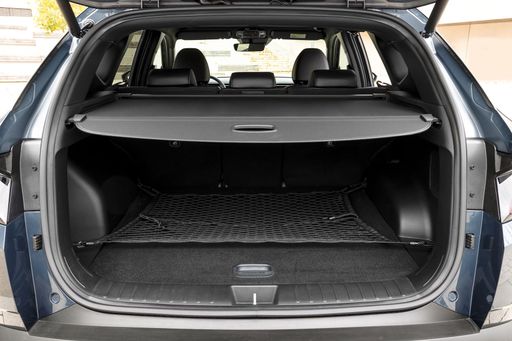 @ Hyundai Motor Company
@ Hyundai Motor Company
 @ Abarth / Stellantis Media
@ Abarth / Stellantis Media
|
 @ Hyundai Motor Company
@ Hyundai Motor Company
|
|
|
|
Costs and Consumption |
|
|---|---|
|
Price
32600 - 39400 £
|
Price
30600 - 46300 £
|
|
Consumption L/100km
-
|
Consumption L/100km
1 - 6.9 L
|
|
Consumption kWh/100km
17.1 - 18.8 kWh
|
Consumption kWh/100km
-
|
|
Electric Range
242 - 265 km
|
Electric Range
64 - 70 km
|
|
Battery Capacity
37.80 kWh
|
Battery Capacity
-
|
|
co2
0 g/km
|
co2
22 - 156 g/km
|
|
Fuel tank capacity
-
|
Fuel tank capacity
42 - 54 L
|
Dimensions and Body |
|
|---|---|
|
Body Type
Hatchback
|
Body Type
SUV
|
|
Seats
4
|
Seats
5
|
|
Doors
3
|
Doors
5
|
|
Curb weight
1410 - 1435 kg
|
Curb weight
1520 - 1889 kg
|
|
Trunk capacity
185 L
|
Trunk capacity
546 - 620 L
|
|
Length
3673 mm
|
Length
4510 - 4520 mm
|
|
Width
1682 mm
|
Width
1865 mm
|
|
Height
1518 mm
|
Height
1650 mm
|
|
Max trunk capacity
550 L
|
Max trunk capacity
1721 - 1799 L
|
|
Payload
370 - 385 kg
|
Payload
525 - 545 kg
|
Engine and Performance |
|
|---|---|
|
Engine Type
Electric
|
Engine Type
Diesel MHEV, Petrol MHEV, Petrol, Full Hybrid, Plugin Hybrid
|
|
Transmission
Automatic
|
Transmission
Automatic, Manuel
|
|
Transmission Detail
-
|
Transmission Detail
Dual-Clutch Automatic, Manual Gearbox, Automatic Gearbox
|
|
Drive Type
Front-Wheel Drive
|
Drive Type
Front-Wheel Drive, All-Wheel Drive
|
|
Power HP
155 HP
|
Power HP
136 - 252 HP
|
|
Acceleration 0-100km/h
7 s
|
Acceleration 0-100km/h
7.9 - 11.6 s
|
|
Max Speed
155 km/h
|
Max Speed
180 - 194 km/h
|
|
Torque
235 Nm
|
Torque
265 - 367 Nm
|
|
Number of Cylinders
-
|
Number of Cylinders
4
|
|
Power kW
114 kW
|
Power kW
100 - 185 kW
|
|
Engine capacity
-
|
Engine capacity
1598 cm3
|
General |
|
|---|---|
|
Model Year
2023
|
Model Year
2024
|
|
CO2 Efficiency Class
A
|
CO2 Efficiency Class
E, F, D, B
|
|
Brand
Abarth
|
Brand
Hyundai
|
Is the Abarth 500 595 695 offered with different drivetrains?
The Abarth 500 595 695 is offered with Front-Wheel Drive.
The prices and data displayed are estimates based on German list prices and may vary by country. This information is not legally binding.
